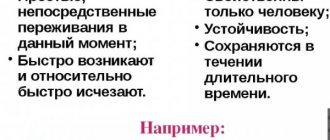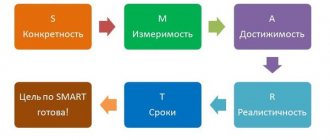Almost every modern person systematically experiences an oppressive feeling of anxiety and emotional overstrain, suffers from the destructive consequences of stressful situations, and is familiar with negative emotions firsthand. All this, like physical pain or beliefs and generally accepted attitudes that limit personal freedom, significantly spoils the quality of our life and prevents us from engaging in self-improvement for our own pleasure.
If you want to develop your inner potential, want to find inner harmony and independently get rid of the negativity that interferes with your life, then the Emotional Freedom Technique (EFT) is exactly what you need! A simple but very effective technique that harmoniously combines the fundamentals of oriental medicine and innovative discoveries in the field of psychology and neurophysiology will help you gain control not only over your body, but also over your mind.
Today we’ll talk about why and who needs the Emotional Freedom Technique, where it came from and how it works, we’ll look in detail at a therapy session of this type and discuss many other issues related to EFT.
Where did the Emotional Freedom Technique come from?
EFT, TES, TEO - names of the same technology. This is a technique for emotional freedom or release. It appeared in the 90s of the last century. Developed by American engineer Gary Craig. Based on the work of his teacher (psychologist Roger Callahan), he created the most popular meridian technique. ETF combines:
- acupressure or acupressure;
- traditional oriental medicine;
- knowledge about energy channels (meridians) from Chinese healers;
- research by Western European psychologists.
In the process of working on the creation of thermal power plants, Craig made a lot of interesting conclusions. According to his opinion, negative emotions, stress and depression are nothing more than a consequence of disruption of the human energy system. Each of us wants to achieve something in life. Surely you also dream of good luck, material well-being, happiness, absolute health, and career advancement. Perhaps self-improvement and spiritual development are on your list. And you have the right to fulfill all the listed desires, regardless of your current situation.
But there is one problem. It lies in the fact that people do not understand or do not want to understand an important life principle. Unfounded negative emotions, for example: anger, envy, irritation, as well as stereotypes and destructive attitudes from the subconscious, interfere with getting what you want.
Emotional Freedom Technique helps restore the functioning of the energy system. It not only eliminates negativity. Its main task is to help get rid of life-destroying attitudes and blocks. Already after the first session, physical and mental pain, worries, and anxiety that accompany an imbalance in the energy system disappear.
EFT or emotional release technique is effective in 80% of all cases. The remaining 20% require the help of a psychologist or even a psychotherapist.
Understanding: How We Store Emotions
An emotional reaction and experience leaves not just an emotional trace in a person’s body, but also an internal block. Emotion is energy that is stuck in our physical body and is waiting to be discharged. Waiting for a similar situation to become active and spill out. They accumulate throughout life and as a result, people react not to the objective situation in which they find themselves, but to situations similar to it that have strained them in the past. What kind of freedom from emotions can we talk about in this case?
Not only do we react inadequately, we also make inadequate decisions in accordance with this reaction, and then we wonder why everything in our life is not working out as we would like, why we behaved strangely in a particular situation, why we remained silent, where we should have responded , why didn’t you rest when you felt overworked? We constantly put things off, leave things unfinished, keep silent, because it’s easier this way - every time life confronts us with the need to take a step, we put it off. It turns out that emotional freedom requires us to be as conscious and collected as possible, without giving us a chance to give up.
The biggest obstacle to emotional freedom is society. In society, a person begins to be taught that he owes everyone. A child must behave well, study well, and obey his elders. At an older age, we owe it to our parents, our children, our bosses, the traffic police, we owe it to almost everyone. Yes, the tax inspectorate, of course, we should too. Moreover, we owe so much that there is no possibility of giving everything we owe. Therefore, a sense of duty is a negative emotion, since a feeling of guilt arises for the part that was not paid.
What is the essence of TPP and how does it work?
The technique developed by Craig is a combination of the fundamentals of acupuncture and neuro-linguistic programming. Its essence is as follows: tapping or pressing on certain points of the human body (meridians) activates lymph nodes and nerve endings.
Positive attitudes that a person repeats simultaneously with the described actions have a beneficial effect first on the subconscious, and then on the endocrine system. As a result, the production of norepinephrine and cortisol (stress hormones) slows down and the production of serotonin, dopamine, endorphins and other happiness hormones increases.
In order to master the technique of emotional freedom, first of all you need to learn to accept yourself in any condition.
Let's give an example. Let's say you want to get rid of your fear of heights. Try to accept yourself with this phobia. Tell yourself: “I absolutely consciously accept myself as I am.” And then imagine that you have gotten rid of fear. Now the positive attitude looks like this: “I can easily conquer the highest mountain peaks. I'm not afraid to stand on the edge of a cliff. I accept myself without any conditions or reservations.”
If you do everything according to the instructions, then after a few EFT sessions you will be able to get rid of such unpleasant emotions as:
- excitement;
- anxiety;
- fears;
- mania.
You will free your consciousness from negative attitudes that in one way or another prevent you from setting and achieving goals.
Feeling: how emotions are reflected in our body in the form of tension
If we pay attention to our body at a time when we experience a strong emotion, we will notice that at this moment some muscle group is contracting. But whether these muscles have completely relaxed is difficult to track. Stuck tension in organs, muscles, bones and fascia begins to destroy our energy. . On the etheric field, it blocks energy along the meridians, organs and muscles suffer, which cease to receive enough energy nutrition.
On the etheric field, it blocks energy along the meridians, organs and muscles suffer, which cease to receive enough energy nutrition.
They begin to work weaker, blood flow and nerve fibers are compressed in the muscles, and patency is impaired. This is where diseases arise. The more sensitive you become, the sooner you begin to notice how, for example, your head starts to hurt from anger and it gradually becomes “not tasty” for you to promote and maintain such an emotional state.
Step-by-step instructions for the emotional freedom technique
A TES therapy session lasts no more than a quarter of an hour. It should be carried out in a quiet, secluded place. Make sure that no one or anything disturbs you. There are no restrictions regarding the time of the event.
Define the problem
At the first stage, think about which problem poisons your life the most. Have you determined? This is what you have to work with. Describe it as accurately as possible. If possible, speak out loud.
Don't try to use general phrases. If something hurts, say so. Doubts about achieving your goal? State the situation like this: “I don’t believe in my strength.” Or maybe you have problems in your family? Label it something like this: “The quarrel with my husband/wife threw me off balance and upset me.” Be specific.
Determine how much you worry
How do you feel at the moment when you think about the problem? Rate these sensations on a 10-point scale. 10 - means strong feelings, the impact of the current situation on your entire future life.
Social meditation Aum marathon - in 2.5 hours we live 12 different emotional states
“I don’t know what you’re missing, but you definitely don’t have enough energy, you don’t have enough drive.
You do everything right in life, you are reasonable people, and still something is missing... And your whole life is busy with survival - work - rest, rest - work... We would like to change something in our lives... Although life really simply reflects who we are. And what can we do to change this? Just do something with yourself, change something inside yourself... and maybe then the reflection of the reality that is inside of us will change... At the AUM Marathon meditation we do something to prepare ourselves for life - life is not here - life is there! And here, in general, the same thing will happen that happens in ordinary life - love, hatred, anger - all the same emotions.” Swami Qayyum AUM consists of 12 stages and lasts about 2.5 hours. This is social meditation, i.e. it involves interacting with others through acceptance, support and empathy. And each person here is like a mirror, giving you the opportunity to take a closer look at yourself from the outside. More about Aum Marathon
Recommendations from experts
To get the most out of the Emotional Freedom Technique, follow these tips:
- Drink water throughout and after your session. The use of energy and emotional resources leads to dehydration.
- In psychology, there are several variations of the emotional freedom technique. Use the one that suits you. The main thing is to follow the step-by-step instructions exactly.
- Formulate the problem and feelings accurately. Instead of the lengthy phrase “I’m depressed,” it’s better to tell what emotions you feel at the moment. Perhaps you are faced with apathy and depression. State the reason for this condition.
- If you find it difficult to decide what you are feeling, close your eyes and try to relax. Now recreate the problem in your mind. Feel it. After this, you will be able to say exactly what you feel.
- Concentrate on yourself, be attentive. Pay attention to how your feelings change. Change your positive attitude with them.
In some cases, nothing happens after the session. Think about what could be stopping you? Perhaps these are established stereotypes or negative blocks in the mind. Once you find them, get started.
The pendulum will help determine emotions
Letting go of an emotion turned out to be much easier than determining its nature. I understood that I was in some kind of negative state; I certainly did not experience happiness or joy. But it was not always possible to determine what kind of condition this was. I think this is the reason why many people fail to work with this technique. Then the pendulum came to the rescue. This is a wonderful tool for working with your subconscious. Anyone can work with it with a little practice.
Dowsing pendulum for working with the subconscious
I will not describe the technique of working with a pendulum; let’s move directly to the method of emotional freedom. There are nine main, so to speak root, emotions: apathy, sadness, fear, lust, anger, pride, courage, consent, peace. The goal of the method is to bring a person to a state of peace - the highest point at which peace and joy are felt. Based on this list, we create a diagram with the help of which we will identify the emotion.
Emotion chart for working with the Emotional Freedom Technique
First of all, you can clear the current state. To do this, we ask the pendulum “What am I feeling now?” Be creative when formulating your question. There are no hard and fast rules. You can ask, “What is the emotion of being in the abdomen?” if you feel discomfort in this part of the body. In the same way, you can work through an entire area of your life (money, relationships, etc.). To do this, you need to track all the moments associated with the sphere that we are cleaning. For example, if it comes to money, you need to find out what emotions you experience in relation to money. What states do you experience when you lose money, when you acquire it, or when it is given to you? Social aspects, how you interact with money in a store, when receiving change. You need to track as many situations related to money as possible. This can be different for everyone. When you identify another emotion, you need to let it go.
Tapping method. Key points
— The beginning of the eyebrow is where the eyebrow begins, slightly to the side of the nose.
— The edge of the eye is the edge of the bone on the border with the eye socket.
- Under the eye - two centimeters down from the pupil.
- Under the nose - in the center between the nose and upper lip.
- Under the mouth - between the lower lip and the end of the chin.
- The clavicle is the point between the collarbone and the first rib. To find it, feel for the U-shaped indentation at the base of your neck (where your tie knot is), 2.5 cm down and then 2.5 cm to the side.
- Under the arm - 10 cm below the armpit.
-The karateka's point is the edge of the palm - closer to the little finger.
Download a file in which these points are clearly visible - Tapping points
And now - attention! $50,000 Tapping Technique:
I really hope that you will study this material and learn to “tap” all your problems! I took these materials from Alena Starovoitova’s website “Keys of Mastery”. I have written more than once about Alena, her website, courses and trainings. If you are interested in Alena's courses, then go here .
This is interesting: Setting up for Prosperity
The essence of technology.
First I will describe tapping for myself, and then for another person (there is a very small difference).
To perform it, it is best for you to take a sitting position, without crossing your legs and arms. Make sure that no one disturbs or distracts you.
Before starting the session, decide what you would call your main problem. How do you understand it? Let's look at tapping using the example of a certain Vasya, who wants to get rid of his fear of flying on airplanes. This could be a phrase like “I'm afraid to fly on an airplane.” Or “I'm afraid of heights”, or “I feel pressure in my chest while flying” - that is, you must choose a phrase that most accurately reflects your problem, so that when you say this phrase, you feel the problem.
If it is difficult to create a formulation, you can focus on the sensations in the body. Vasya’s fear of flying feels like pressure in his chest. He can start like this: “My chest feels tight when I fly.”
The shorter the phrase, the better.
So you've defined the phrase.
Now you can start the session. There are 2 types of tapping for yourself - short and extended. The difference between them is very small.
A short session consists of 3 parts, the 1st and 3rd of which are absolutely identical.
In an extended session, preliminary tapping on the karateka's point is added, just like in tapping for another person.
So, in a short session, the 1st and 3rd parts are alternate tapping of certain acupuncture points on the body, and the 2nd part, an intermediate point, without pronouncing the problem.
Now in more detail about what to knock, how to knock, etc.
For a clearer description, I will make a tapping session in the form of a diagram, and then add details below.
Tapping session for yourself. (brief)
1st part: 1. Tap 5-9 times on a point on the eyebrow, saying the problem 1 time.
tapping points on the face (1-5)
2.Tap 5-9 times on a point on the side of the eye, saying the problem 1 time.
tapping point on the collarbone (6)
3.Knock 5-9 times on the point at the bottom of the eye, saying the problem 1 time. 4.Tap 5-9 times on the point above the lips under the nose (dimple), saying the problem 1 time. 5. Tap 5-9 times on the point under the lower lip - the notch between the lip and the chin, saying the problem once. 6. Point - the beginning of the collarbone (like a lump) (I won’t repeat it all over again, everything is done exactly the same - 5-9 times Let's knock, talk about the problem once)
tapping point on the side (7)
7. A point on the side of the body, where a woman’s bra goes.
tapping point thumb (8)
8. A point on the side of the thumb, near the base of the nail
9. A point on the side of the index finger, in the area between the second and third phalanges.
10. Point on the side of the middle finger, in the same area.
tapping point index finger (9)
tapping point middle finger (10) 11. The point on the side of the little finger (we don’t touch the ring finger!) is the same as on the other fingers.
tapping point pinky (11)
12. “Karateka” point - on the edge of any palm, at a level 1.5 cm below the base of the little finger. (karatekas use it to hit bricks..)
tapping point karateka (12) 2nd part:
The 13th point - Ligament Point - is located between the bases of the little and ring fingers, on the back of the palm, between the knuckles that protrude when the fingers are bent.
tapping point ligament
We press this point WITHOUT talking about the problem. At the same time, we take 2 deep breaths, and then look with our eyes up, down, right, left.
If at the same time you have not yet come out of the “trance” - a relaxed state, you can calculate any example in your mind, perform any mathematical operation.
The essence of the connection point, the second part of the session, is that you must come out of the trance.
After leaving (this usually takes 10-20 seconds),
We continue exactly the same as in the first part:.
3rd part (=first):
(repeat points 1 to 12)
That's it, the tapping session is over. Inhale twice, exhale deeply. It is recommended to drink some water (preferably cleansing water, any spelled water, but you can use regular plain water).
Now you can start your next tapping session straight away. It is better to do as many sessions at a time as is convenient for you in order to feel relief from your problem. But work for at least half an hour.
This can be up to 10-12 sessions at a time.
*****
With an extended session, at the very beginning you tap the karateka’s point first. At the same time, you name the problem 4 times and immediately assume its solution, or a change in a different direction. For example, for Vasya about the fear of airplanes there will be the following phrase: “I am Vasya, and although I am afraid of flying on airplanes, I am not afraid of it.” This kind of construction occurs only if the problem can really be gotten rid of.
If you just need to learn to live with it and perceive it normally, then the structure of the phrase is as follows. Often it is with self-acceptance that you need to start getting rid of difficult things. That is, first accept yourself, despite the fact that you are this and that, and then move yourself towards deliverance:
“I am Vasya, and although I am afraid of flying on airplanes, I accept myself”
Another version of the phrase is said when nothing can be changed. Let's say:
“I am Vasya, and although my beloved kitten died, he died.”
That is, the goal here is to take the event for granted, that nothing can be done about it.
We tap the karateka's point only at the beginning of the session. Then, after the ligament point, we start with the eyebrow without touching this point again. And then we speak further phrases as in a short session, i.e. without “although I...”, etc.
What effects can you feel and what are the recommendations for tapping?
- It makes no difference which hand you use to hit the points, or on which side of the body.
- By tapping each point, you need to name the problem only 1 time. You should not repeat it twice or thrice.
- While working on your fingers, it’s better not to look at your hands; it’s better to do everything with your eyes closed, so immersion in your work will be much better.
- You can't cross your legs.
- Try to feel the problem at every point - i.e. Don’t reduce everything to automatic tapping mode, but concentrate on what you are working on..
- It is imperative to manage the problem as it evolves - from “my head hurts unbearably”, “it hurts less”, “it almost doesn’t hurt anymore”, “it doesn’t hurt anymore”. Those. follow it as the result changes.
I'll tell you more about it here.
When working on any problem, notice its intensity within you. That is, if at the beginning of the sessions Vasya was very afraid of airplanes, and when he thought about them, everything tightened up in him, then after just a few taps, Vasya can be convinced that the severity of the fear has decreased. At the same time, the phrase changes. If at the beginning it was “I’m afraid of planes,” then now you can switch to “I’m a little afraid of planes,” etc.
- Tapping is relaxing. Therefore, after the sessions you may want to sleep. This is good, your body and energies should come to their senses. If you sleep, it will be great.
Therefore, if possible, it is better to do tapping in the evening, before going to bed.
- For better cleaning between sessions (2 circles of points), you can take a sip of water.
- If you tap yourself or someone else for several days in a row, for different problems, sooner or later you will get the feeling that enough is enough, you need to stop. Or it won’t arise, but there should still be rest. Try to do tapping for no longer than 2 weeks in a row, taking breaks for several days.
The fact is that tapping greatly rearranges your energy bodies, and your physical body, your energies, must line up again in a harmonious manner, return to its working state. Therefore, do not overdo it, be sure to rest between series of sessions.
Because tapping is a cleansing technique; when performed, all the same effects are possible as with any energy cleansing. We release emotional blocks, energies come out, splash out, and your meridians begin to vibrate as if these blocks never existed.
When you release the energies trapped inside you, there may be different reactions of the body: the most common is yawning (and from the yawn itself you can determine how deep the problem still lies. If you start to yawn, but cannot yawn in any way, it means that the problem still needs to be addressed, not yet complete release has set in. This is one of the diagnostic signs - how your cleansing is going).
Further, there may be impulses to laugh, or vice versa, to cry. If a very strong block is knocked out, you will even want to scream, so if you know in advance that the one you are cleaning (about cleaning another person - below) is too dirty and pinched, or has very powerful emotional problems, choose a place where you It won’t be a shame to scream to your heart’s content. Sometimes you want to jump, stretch, or even punch a pillow.
But all this passes, and then both you, the one cleaning, and the one you are cleaning, feel peace and tranquility.
11. Group tapping has the best effect - when several people (2 or more) work simultaneously on the problem of one person. It is advisable to carry out group tapping at the same time. That is, let’s say you have 3 friends with whom you want to conduct group tapping for your fourth friend – Vasya. At the same time, Vasya may not even know anything about it.. You and three friends agree that at the same time, every day, say at 19.00 - you simultaneously, each in his own house - start tapping for Vasya, for his fear of heights .
In this case, the effects of telepathy may arise when you, without talking to your friends, will pull out from “Vasya” the same roots of this fear, the same phrases will come up.
This usually happens when the tapping players themselves are quite energetically sensitive and open (they have good inclinations or developed extrasensory perception).











